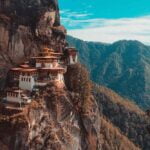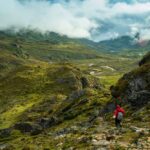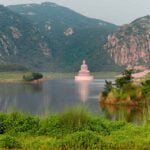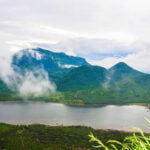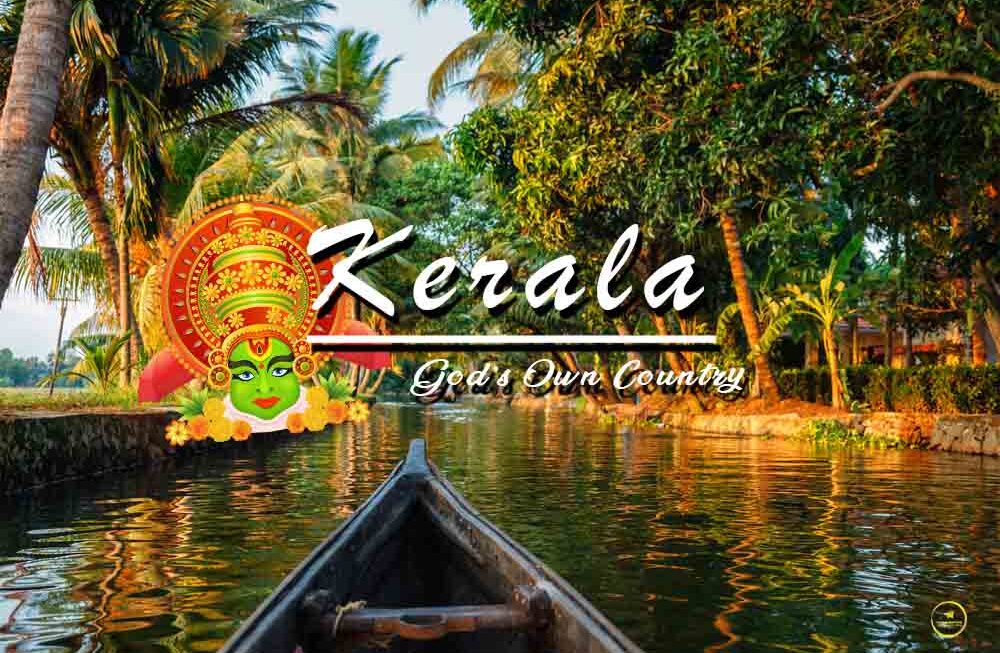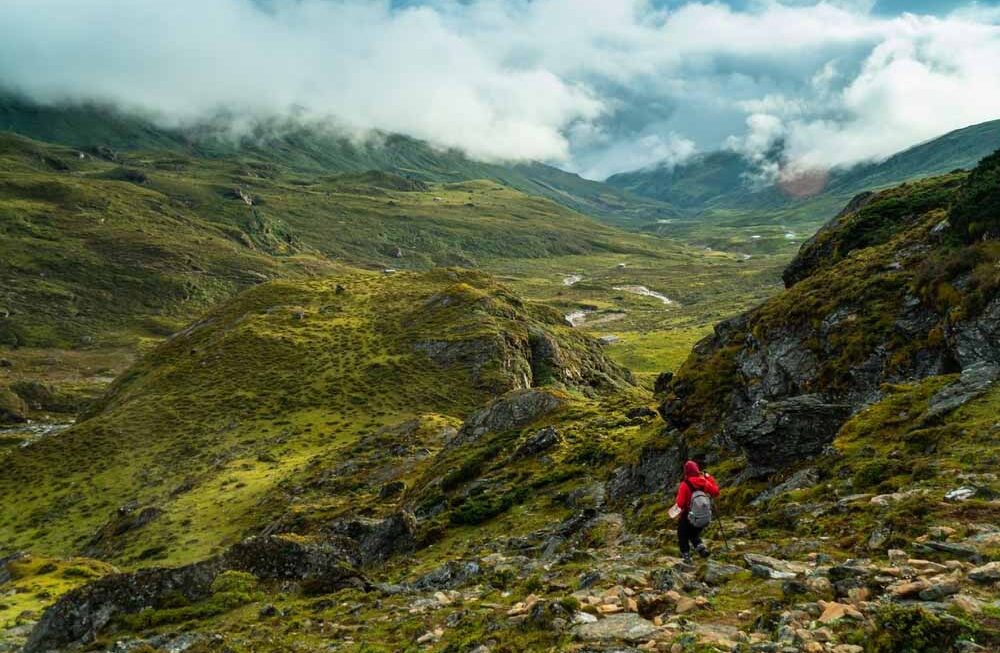Welcome to the beautiful Brahmagiri Wildlife Sanctuary, a haven for environmental lovers and animal aficionados. This sanctuary is home to various flora and fauna, nestled amid the picturesque Western Ghats of Karnataka. In this post, we will examine the wonders of Brahmagiri Wildlife Sanctuary, as well as its ecological significance and the thrilling activities it has to offer tourists.
Outline of the Article
Location and Overview of Brahmagiri Wildlife Sanctuary
Brahmagiri Wildlife Sanctuary is located in Karnataka’s Kodagu district. This sanctuary is part of the Western Ghats, a UNESCO World Heritage Site, and covers an area of approximately 181 square kilometers. It is bordered by the well-known Pushpagiri Wildlife Sanctuary and the Wayanad Wildlife Sanctuary.
Flora and Fauna Diversity
Rich Vegetation
When you enter Brahmagiri Wildlife Sanctuary, you will be captivated by its lush foliage and deep trees. The sanctuary’s vegetation is diverse, with evergreen and semi-evergreen woods, moist deciduous forests, and grasslands. These varied environments provide an ideal home for a large variety of plant and animal species.
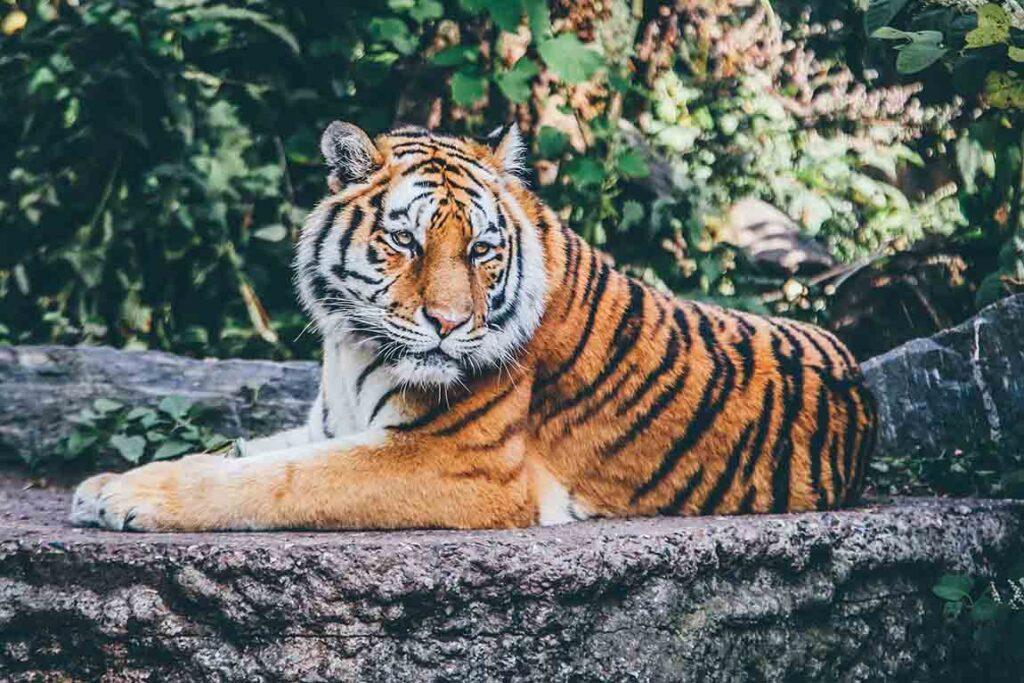
Mammals and Birds
The wildlife community of Brahmagiri Wildlife Sanctuary is diverse and vibrant. Elephants, tigers, leopards, sloth bears, gaurs, and sambar deer are among the many mammal species that call the sanctuary home. With over 300 avian species, it is also a birdwatcher’s delight, home to the rare and stately Malabar pied hornbill, the Nilgiri laughing thrush, and the lively Malabar trogon.
Reptiles and Amphibians
For reptile and amphibian enthusiasts, the refuge is a treasure trove. You might come across a king cobra, a python, a vine snake, and a variety of frogs and toads. The various landscapes of the sanctuary, including rivers and streams, provide a great home for these intriguing critters.
Ecological Significance
Biodiversity Conservation
Brahmagiri Wildlife Sanctuary is critical to biodiversity protection in the Western Ghats. Because of its protected status, it ensures the survival of unique and endangered plant and animal species. The sanctuary provides a safe refuge for a variety of threatened species, assisting in their survival and preserving natural equilibrium.
Watershed Protection
The sanctuary is situated in an area that is a major watershed for multiple rivers. The lush flora and woodlands operate as natural filters, ensuring the quality and quantity of water supplies. The preservation of the Brahmagiri Wildlife Sanctuary is critical for ensuring a healthy water supply for both wildlife and adjacent human communities.
Climate Regulation
The lush greenery of Brahmagiri Wildlife Sanctuary helps to regulate the local climate. Forests operate as carbon sinks, absorbing atmospheric CO2 and minimizing the effects of climate change. The sanctuary’s contribution to climate regulation is priceless, making it a critical component of the greater ecosystem.
Trekking and Nature Trails
Brahmagiri Wildlife Sanctuary provides exhilarating trekking and nature path experiences for guests to immerse themselves in nature’s splendor. The following are some of the most popular trails within the sanctuary:
Irupu Falls Trek
Set out on a trek to the breathtaking Irupu Falls, which are located within the sanctuary. The journey takes you through deep forests and stunning surroundings before arriving at the majestic waterfall. The falling rivers surrounded by lush flora create an enthralling image that will leave you speechless.
Brahmagiri Peak Trek
The Brahmagiri Peak trip is a must-do for adventure seekers. The trail leads to the highest point in the Brahmagiri range, where you may enjoy panoramic views of the surrounding valleys and peaks. When you reach the summit, you will be rewarded with stunning views and a sense of accomplishment.
Pakshipathalam Trek
Pakshipathalam, which translates to “abode of birds,” is a hidden treasure within the sanctuary. The journey to Pakshipathalam winds through deep trees, rugged terrain, and caverns. It is a birdwatcher’s paradise since you can see a vast diversity of avian species along the path. The attractiveness of this trekking trip is enhanced by the unusual rock formations and quiet surroundings.
Wildlife Safari and Bird Watching
Take an exciting wildlife safari or go bird watching to get a closer look at the different animals of Brahmagiri Wildlife Sanctuary. Here are some possibilities for nature lovers:
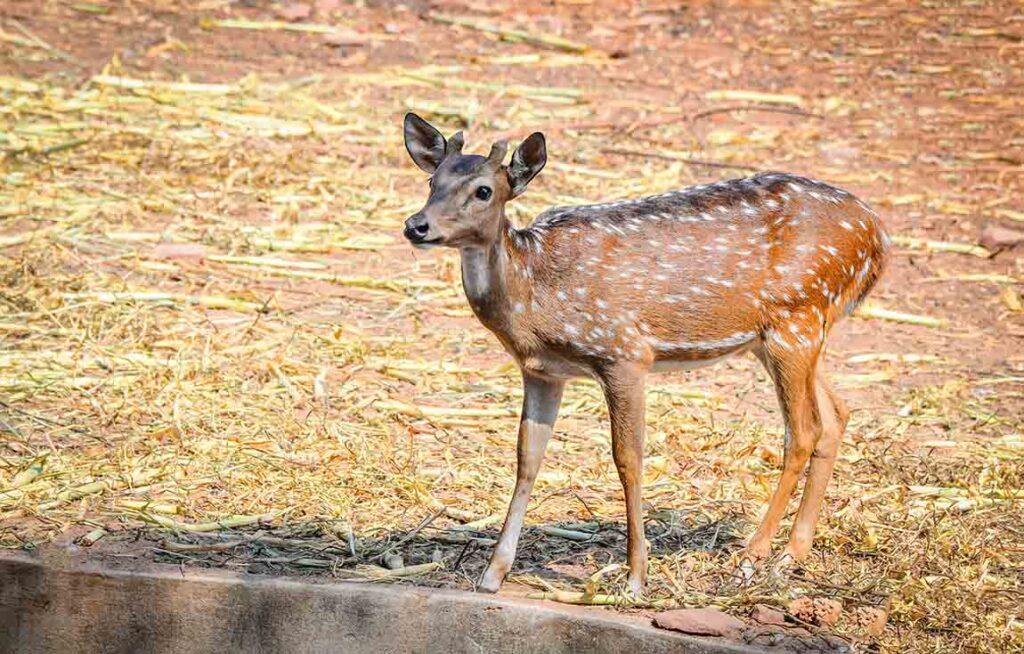
Jeep Safari
A jeep safari allows you to explore the sanctuary’s wilderness. You can walk the woodland trails with professional guides, improving your chances of encountering secretive creatures like tigers, elephants, and other wildlife. The educated guides will give fascinating insights into the sanctuary’s flora, animals, and conservation initiatives, making it an instructive and exciting experience.
Bird Watching Hotspots
Brahmagiri Wildlife Sanctuary is a birdwatcher’s paradise. Several designated places within the refuge provide excellent chances for bird observation. Set up your binoculars and look for the Malabar pied hornbill, the Nilgiri laughing thrush, and the elusive Great Indian Hornbill. These avian marvels’ melodic calls and brilliant plumage will captivate you.
Conservation Efforts and Initiatives
Brahmagiri Wildlife Sanctuary is both a natural wonder and a testament to conservation efforts. The sanctuary’s officials and local populations collaborate to safeguard and preserve the sanctuary’s fragile ecosystems. Here are a few noteworthy initiatives:
Habitat Restoration
Attempts are being made to repair deteriorated habitats within the refuge. Reforestation programs seek to increase forest cover while also improving wildlife habitat and encouraging biodiversity protection. The sanctuary ensures the long-term survival of its ecosystems by repairing damaged regions.
Community Engagement
Local community participation is critical in the conservation of Brahmagiri Wildlife Sanctuary. Collaborative programs are being established to educate residents about the importance of the sanctuary and the need for its protection. These projects encourage sustainable practices and coexistence between humans and wildlife by instilling a sense of ownership and responsibility.
Anti-Poaching Measures
The sanctuary officials have put in place strong anti-poaching procedures to combat illicit activity such as poaching. To avoid wildlife exploitation, regular patrolling, surveillance, and collaboration with law enforcement agencies are conducted. These procedures help to protect endangered species and the general conservation of the sanctuary.
Responsible Tourism and Visitor Guidelines
It is critical to be a responsible tourist when visiting Brahmagiri Wildlife Sanctuary. Here are some tips to follow to ensure your visit has the least possible impact on the environment:
Dos and Don’ts
- To prevent damaging delicate environments, stick to established routes and paths.
- Please do not litter. Take your trash with you and properly dispose of it.
- Respect wildlife by keeping a safe distance and not feeding or touching them.
- Avoid using flash photography since it can annoy or disorient animals.
- Follow the directions of guides and authorities for your own safety and the safety of the wildlife.
Wildlife Photography Etiquette
Consider the following guidelines if you are an ardent wildlife photographer looking to obtain spectacular photographs while minimizing disturbances:
- Allow animals to behave naturally without generating stress by exercising patience.
- To keep a reasonable distance, use telephoto lenses.
- To attract wildlife, avoid using artificial props or bait.
- Respect the sanctuary’s photographic policies and, if necessary, ask permission.
Accommodation and Facilities
Visitors who want to immerse themselves in nature can stay in Brahmagiri Wildlife Sanctuary. The sanctuary offers cozy forest guesthouses on its grounds, allowing travelers to remain close to nature. There are also adjacent resorts and homestays that provide a combination of comfort and proximity to the sanctuary. These accommodations give a calm and tranquil environment, making your stay memorable.
Best Time to Visit
The months of October to March are perfect for visiting Brahmagiri Wildlife Sanctuary because the weather is pleasant and ideal for outdoor activities. From June to September, the monsoon season delivers beautiful foliage but may hinder some activities owing to severe rains. It is best to check the weather forecast and plan your visit appropriately.
How to Reach Brahmagiri Wildlife Sanctuary
By Air
Mangalore International Airport, located around 175 kilometers away, is the closest airport to Brahmagiri Wildlife Sanctuary. You can take a cab or public transit from the airport to the refuge.
By Train
Mysore Junction, the closest railway station to the sanctuary, is well-connected to major Indian cities. To get to the sanctuary from Mysore, you can take a taxi or a bus.
By Road
The Brahmagiri Wildlife Sanctuary is easily reached by road. Buses run often from adjacent towns and cities such as Bangalore, Mysore, and Mangalore. You can alternatively drive your own car or take a taxi to the sanctuary.
Safety Precautions and Travel Tips
It is critical to prioritize your safety and have a wonderful experience when visiting Brahmagiri Wildlife Sanctuary. Here are some travel safety measures and ideas to bear in mind:
- During treks and safaris, listen to the advice of guides and authorities.
- During outdoor activities, bring insect repellant, sunscreen, and plenty of water.
- For trekking and walking paths, dress comfortably and wear appropriate footwear.
- Respect the sanctuary’s sacredness by refraining from any activity that may hurt or disturb the wildlife or their surroundings.
- When departing on long hikes or trails, notify someone of your itinerary and approximate return time.
- Before you travel, check the weather forecast and dress accordingly.
- Keep a respectful distance from wildlife and avoid any behavior that may disturb or provoke it.
Conclusion
Brahmagiri Wildlife Sanctuary is a monument to the Western Ghats’ incredible beauty and biodiversity. Its diverse flora and wildlife, combined with stunning scenery, make it a nature lover’s dream. By visiting this sanctuary and practicing responsible tourism, you help to support conservation efforts and the long-term viability of this beautiful hideaway.
Pack your luggage, put on your walking shoes, and prepare to be awestruck by the wonders of Brahmagiri Wildlife Sanctuary. Experience the thrill of trekking, see a variety of wildlife, and relax in nature’s tranquillity. Discover the harmony that exists between humans and the wilderness, and make memories to last a lifetime.
Note: Before planning to visit Karnataka, Please check any policy updates on the Karnataka tourism official website Welcome to Karnataka Tourism – Government of Karnataka.
FAQs
1. Is permission required to enter the sanctuary?
Yes, visitors are required to obtain permission from the sanctuary authorities before entering. This is to ensure the safety of visitors and the conservation of the sanctuary.
2. Are there any accommodation options within the sanctuary?
Yes, Brahmagiri Wildlife Sanctuary provides forest guesthouses within its premises for visitors to stay. These guesthouses offer a unique opportunity to experience the wilderness up close.
3. What is the entry fee for visitors?
The entry fee for visitors may vary and is subject to change. It is advisable to check the official website or contact the sanctuary authorities for the most up-to-date information regarding entry fees.
4. Are there any guided tours available?
Yes, guided tours are available within the sanctuary. Experienced guides accompany visitors on treks and safaris, providing valuable insights into the flora, fauna, and conservation efforts of the sanctuary.
5. Can I spot tigers in Brahmagiri Wildlife Sanctuary?
While tigers inhabit the sanctuary, spotting them can be challenging due to their elusive nature. However, the sanctuary is home to a variety of other wildlife species that you can encounter during your visit.
6. Are there any restrictions on photography within the sanctuary?
Photography is generally allowed within the sanctuary, but it is important to follow the guidelines and etiquette to ensure minimal disturbance to the wildlife. Flash photography should be avoided as it can startle or disorient the animals.
7. Can I bring my own vehicle into the sanctuary?
Private vehicles are not allowed within the sanctuary. Visitors can either hire a taxi or use public transportation to reach the sanctuary and explore its beauty.
8. Are there any facilities for food and refreshments within the sanctuary?
While there are no restaurants or food stalls within the sanctuary, visitors can carry their own food and enjoy a picnic amidst nature. It is important to dispose of any waste responsibly to maintain the cleanliness of the sanctuary.
9. Are there any specific rules for birdwatching in the sanctuary?
Birdwatching is a popular activity in Brahmagiri Wildlife Sanctuary. Visitors are advised to maintain silence and avoid sudden movements to not disturb the birds. Binoculars and field guides can enhance the birdwatching experience.
10. What makes Brahmagiri Wildlife Sanctuary unique?
Brahmagiri Wildlife Sanctuary’s unique location in the Western Ghats, its diverse flora and fauna, and its commitment to conservation make it a truly special destination. The sanctuary offers a blend of adventure, tranquility, and educational experiences, making it a nature lover’s paradise.
As we commemorate the beauty and significance of Brahmagiri Wildlife Sanctuary, we encourage you to explore this enthralling sanctuary and make everlasting moments amidst the enchantment of the environment. Witness nature’s beauty, contribute to its conservation, and enjoy the calm that Brahmagiri provides. Plan a trip to this naturalist’s paradise and embark on an adventure of discovery and awe.

